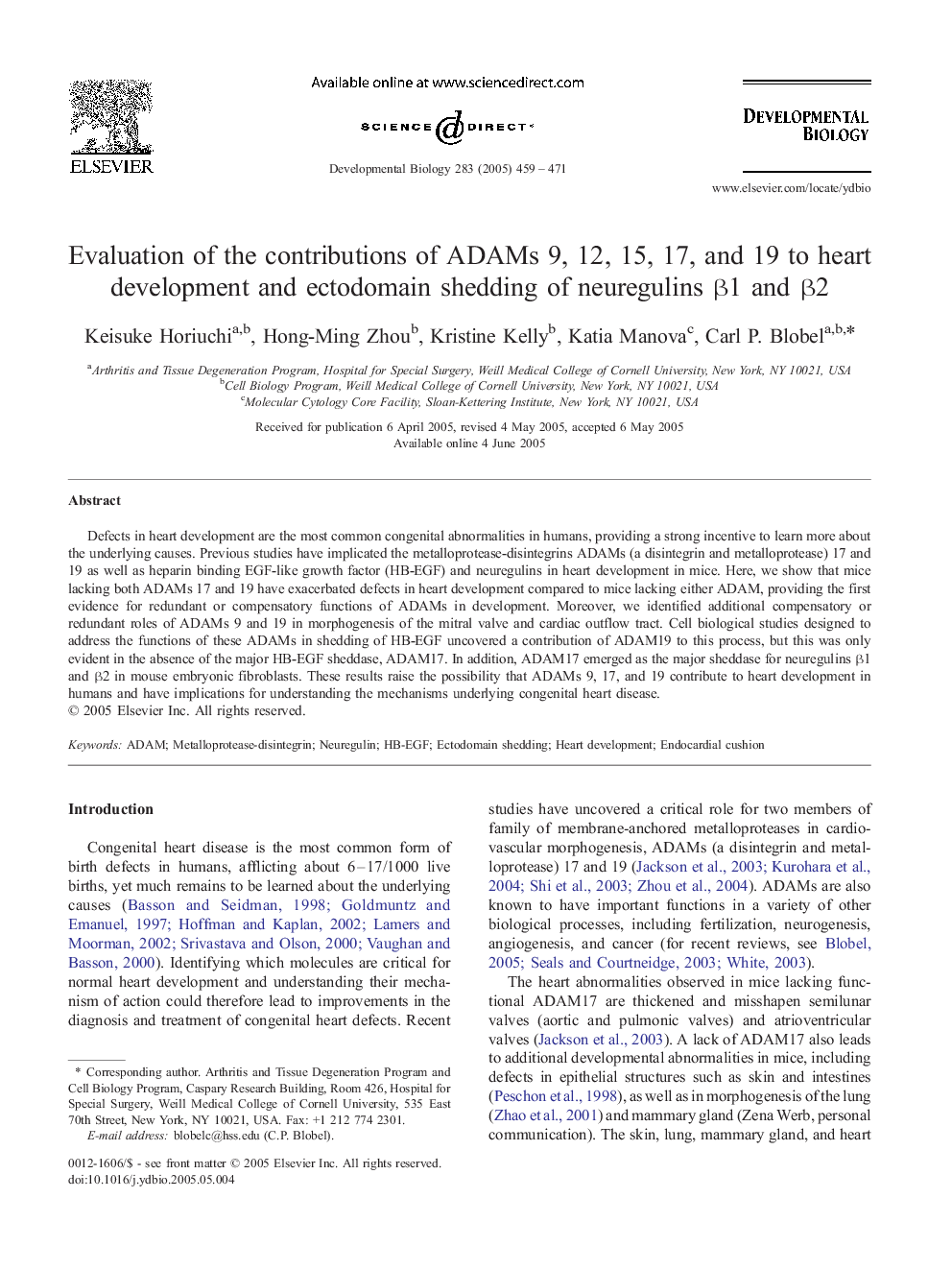| Article ID | Journal | Published Year | Pages | File Type |
|---|---|---|---|---|
| 10934056 | Developmental Biology | 2005 | 13 Pages |
Abstract
Defects in heart development are the most common congenital abnormalities in humans, providing a strong incentive to learn more about the underlying causes. Previous studies have implicated the metalloprotease-disintegrins ADAMs (a disintegrin and metalloprotease) 17 and 19 as well as heparin binding EGF-like growth factor (HB-EGF) and neuregulins in heart development in mice. Here, we show that mice lacking both ADAMs 17 and 19 have exacerbated defects in heart development compared to mice lacking either ADAM, providing the first evidence for redundant or compensatory functions of ADAMs in development. Moreover, we identified additional compensatory or redundant roles of ADAMs 9 and 19 in morphogenesis of the mitral valve and cardiac outflow tract. Cell biological studies designed to address the functions of these ADAMs in shedding of HB-EGF uncovered a contribution of ADAM19 to this process, but this was only evident in the absence of the major HB-EGF sheddase, ADAM17. In addition, ADAM17 emerged as the major sheddase for neuregulins β1 and β2 in mouse embryonic fibroblasts. These results raise the possibility that ADAMs 9, 17, and 19 contribute to heart development in humans and have implications for understanding the mechanisms underlying congenital heart disease.
Related Topics
Life Sciences
Biochemistry, Genetics and Molecular Biology
Cell Biology
Authors
Keisuke Horiuchi, Hong-Ming Zhou, Kristine Kelly, Katia Manova, Carl P. Blobel,
